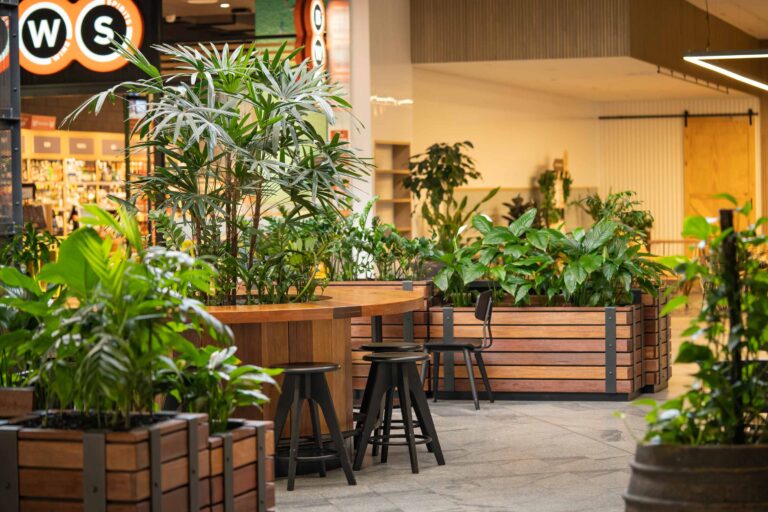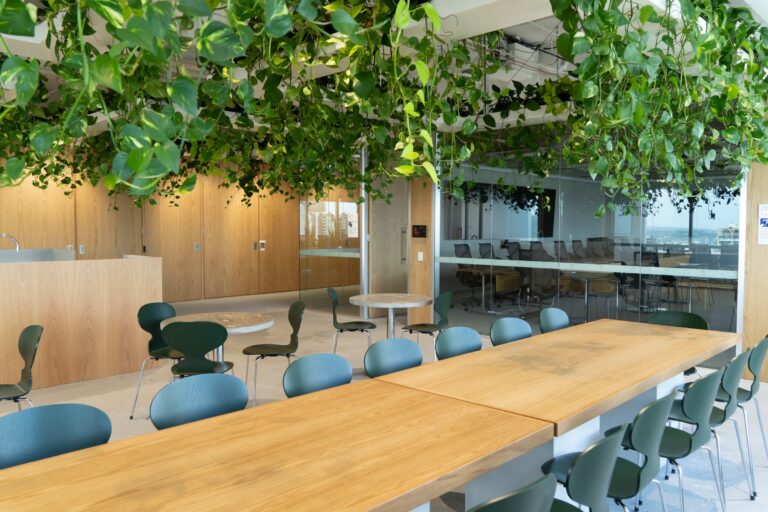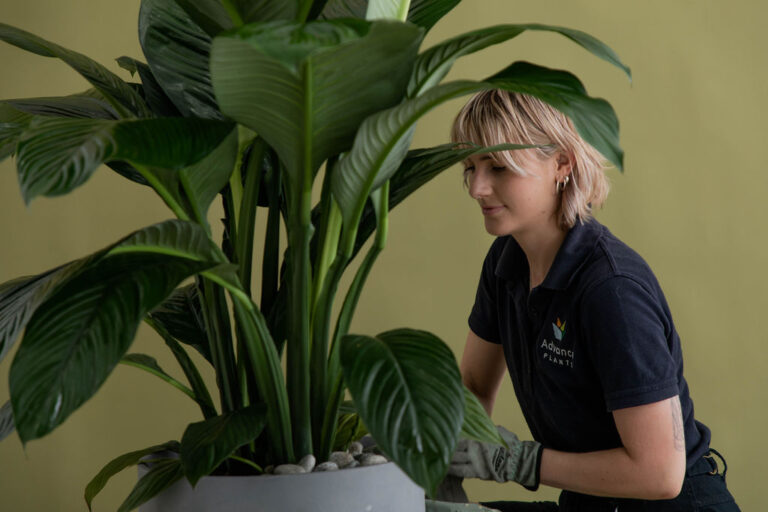When it comes to green walls, there’s no doubt they elevate a space—adding texture, colour, and a natural focal point that draws people in. But not all green walls are created equal, and choosing the right one comes down to more than just looks.
For many commercial spaces, preserved moss walls are a smarter, more versatile choice than living green walls. While both offer beauty and biophilic benefits, preserved moss walls are often more practical, more cost-effective, and far easier to maintain.
We design and install both options in the Brisbane and Gold Coast areas. Here’s what you should know when deciding which is right for your space.
Quick comparison: Preserved moss vs living green walls
| Feature | Preserved moss walls | Living green walls |
|---|---|---|
| Installation Cost | $750–$1,000 per m² | $1,500+ per m² |
| Maintenance | None | Regular watering, pruning, and monitoring |
| Light Requirements | None | Needs natural or artificial light |
| Waterproofing Needed | No | Yes – due to irrigation systems |
| Air Purification | No | Yes – through photosynthesis |
| Acoustic Benefits | Excellent – absorbs sound | Moderate |
| Design Flexibility | High – logos, murals, custom shapes | Medium – depends on plant types and growth |
| Best For | Offices, boardrooms, lobbies, dark spaces | Well-lit feature walls with regular care |
| Lifespan | 5–10 years | Variable – based on environment and upkeep |
The benefits of living green walls
Living green walls are an incredible design statement. With the right light and care, they bring movement, scent, and seasonal change to a space in a way that few other design elements can.
They:
- Help purify indoor air
- Improve humidity in dry environments
- Create a vibrant, ever-changing natural element
We’ve created beautiful living green walls in lobbies, cafes, and light-filled offices—and when conditions are right, the result is nothing short of spectacular.
But they do come with requirements: lighting, irrigation, waterproofing, and ongoing plant care. For some businesses, this commitment is manageable. For others, it can become a burden over time.
Why preserved moss walls are often the smarter choice
Preserved moss walls offer many of the same visual and psychological benefits of living walls—without the complexity.
They’re:
- Made from real moss, preserved to maintain colour and softness
- Completely maintenance-free
- Lightweight, with no irrigation or structural modifications required
- Ideal for spaces with low light or limited access
You can install them in boardrooms, stairwells, reception areas—even internal bathrooms—anywhere a living green wall wouldn’t survive.
They also absorb sound beautifully, making them a great choice for offices and shared workspaces.
Do they offer the same health benefits?
While preserved moss walls don’t purify air like living plants do, they still contribute to wellbeing through biophilic design—the practice of connecting people with nature in the built environment.
Benefits of preserved moss walls include:
- Reduced stress and improved focus
- Enhanced acoustic comfort
- A calming, natural aesthetic that lifts the space
In most office environments, these benefits alone make a meaningful difference.
Which should you choose?
There’s no one-size-fits-all answer—but here’s our advice:
- Choose a living green wall if you want living plants, have the right light conditions, and are ready to commit to regular care.
- Choose a preserved moss wall if you want a stunning, natural feature that’s low-maintenance, flexible, and long-lasting.
Final word
We’re big believers in the power of plants—whether they’re living or preserved. But if you’re looking for a green wall solution that works harder for your space without adding to your maintenance list, preserved moss walls are a smarter choice for most commercial interiors.
Want to know what would work best in your space?
Contact our team for a tailored consultation and bring nature indoors—your way.



